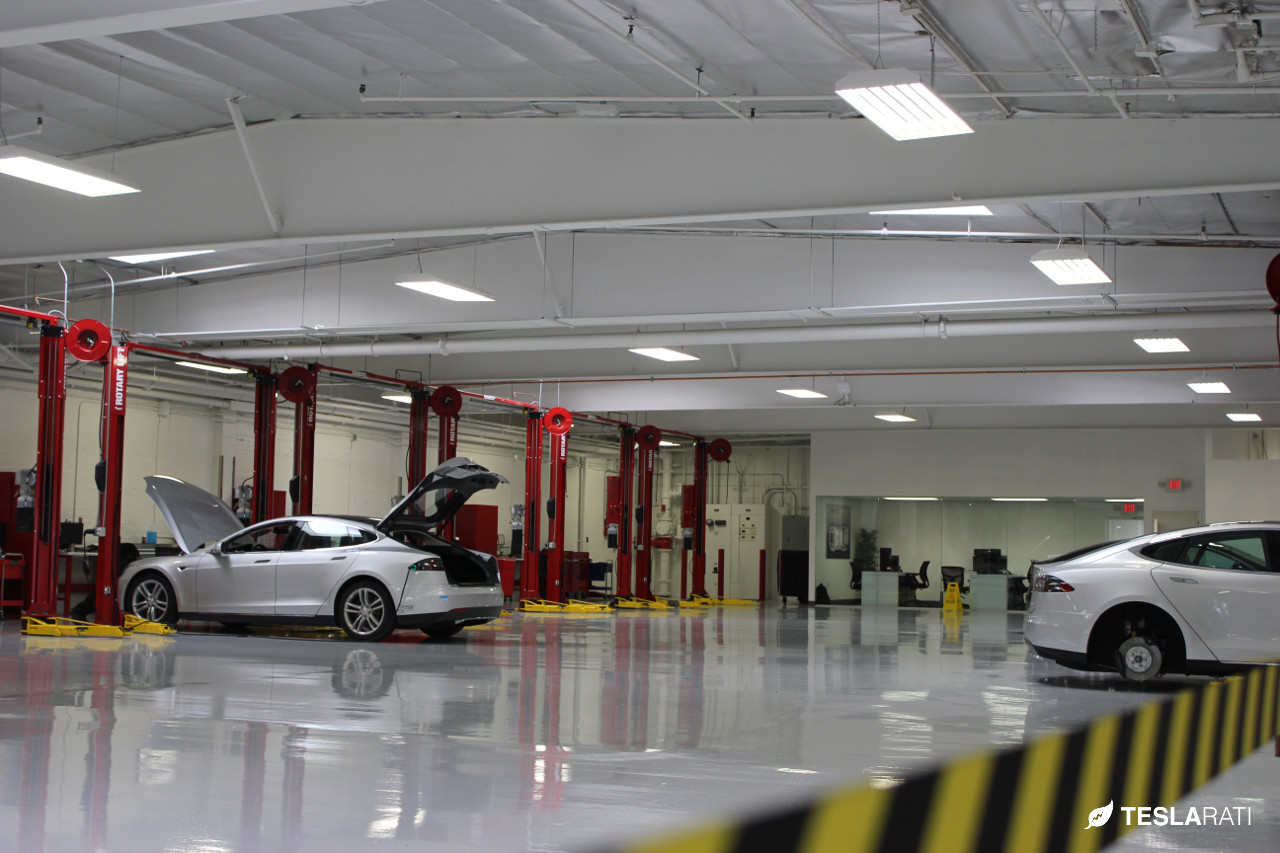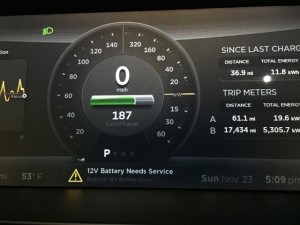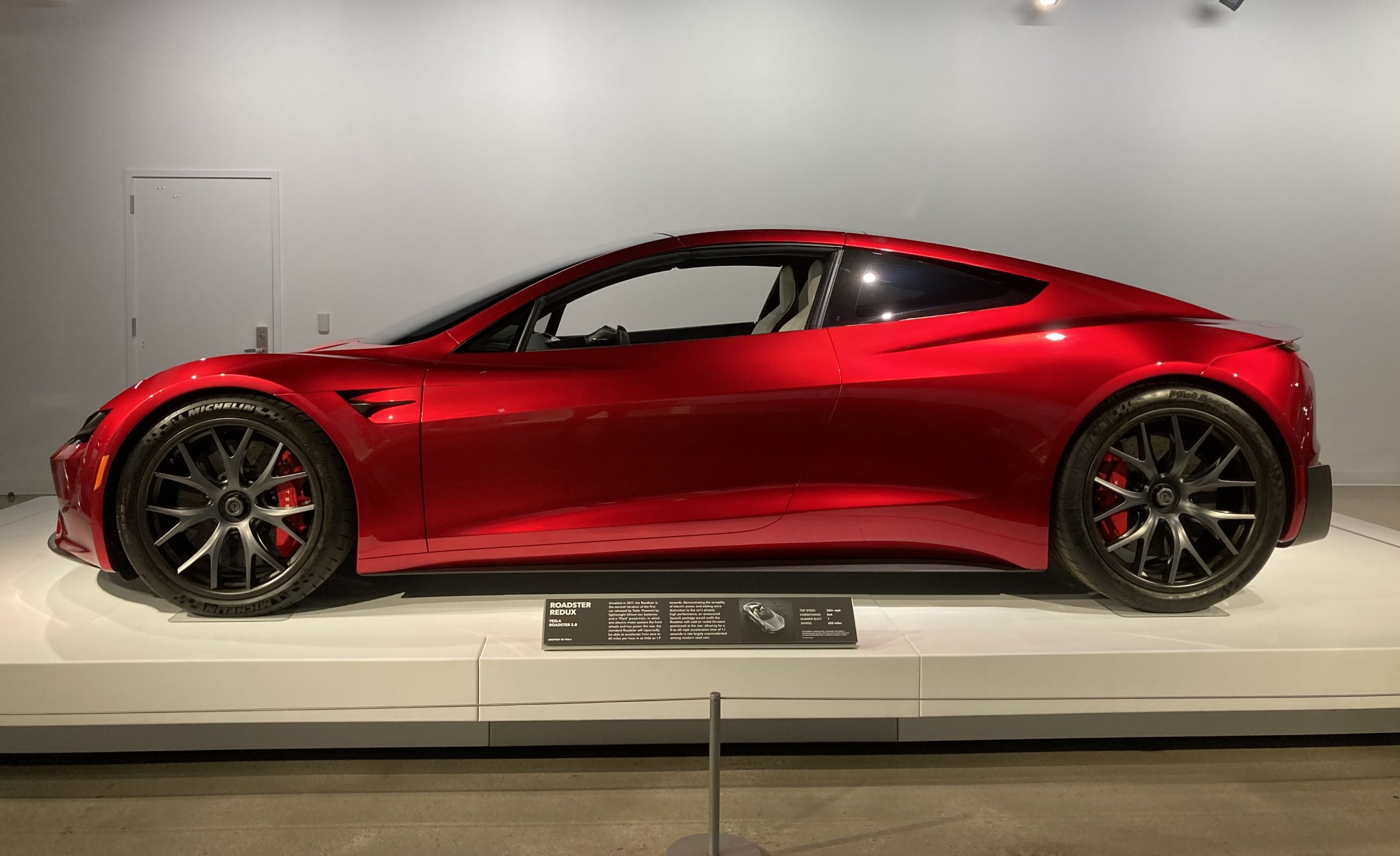News
Scaling Tesla Service Centers with Production

In a high tech startup, small or large, the effectiveness in which the business can scale is crucial to its success. Tesla has been known for its world class customer service, which it undoubtedly has, but recent experiences with replacing a Tesla 12V battery here in New England has me asking the question, can Tesla service scale at a rate to match its production?
The Early Days
Tesla service centers are going above and beyond when it comes to customer service. Some of this is to account for early design and quality challenges with the Model S, but also to make up for the limited number of service centers that are available. Either way, Tesla has done a stellar job with customer satisfaction up until this point. For the second year in a row Tesla has topped Consumer Reports satisfaction index.
But as new Model S owners continue to hear about Tesla’s world-class customer service by word of mouth and through mass media, the expectations are set to an extremely high level that service centers will need to deliver against. As Tesla Motors continues to focus its efforts on production and scaling the Supercharger network, they’ll need to ensure that Service Centers scale at a rate to match the growing customer base.
My Tesla Service Center Experiences
 There hasn’t been much to service on my Model S other than a tire rotation thanks to the marvels of its simple design. However, my experiences in dealing with a busy Tesla Service Center led me to believe that they’d rather I have went somewhere else for the tire rotation than to have it performed at their facility.
There hasn’t been much to service on my Model S other than a tire rotation thanks to the marvels of its simple design. However, my experiences in dealing with a busy Tesla Service Center led me to believe that they’d rather I have went somewhere else for the tire rotation than to have it performed at their facility.
Generally when I need to take my ICE cars in for service the most I have to wait is 1-2 days. My most recent experience with fixing 12V battery issue through the Tesla Service Center here in New England took nearly 2 weeks. Admittedly, some of that was due to poor weather and a holiday in between but there were still seven business days where the service center was too overloaded to get me in within the usual 1-2 days.
From talking to other Tesla owners it sounds like service experiences can be a mixed bag of results depending on where you live. One Model S owner based out of California, reported a similar issue with the 12V battery but managed to receive a call back within 15 minutes and later booked for service the following day. As for me? It took several phone calls, two emails and almost an entire business day gone before I was able to get schedule an appointment. The actual service that the Tesla technicians performed was excellent, but the scheduling process was abysmal.
- A Norwegian Tesla ownership experience
- Tesla LA Club unveils Los Angeles’ largest Tesla Service Center
When the day of service finally arrived, I told the Tesla technician that it was fine to pick up the Model S from my work place and bring it back that same day since they didn’t have a loaner available. The technician arrived by Uber promptly at 10:30am, jotted down some notes and then drove away in my car. The service department had promised to have it back by 3:30pm but in reality I got the vehicle back at 7pm. Fortunately I had no other plans that evening.
Scaling Tesla Service Centers
There was one Tesla Service Center serving all points north of Connecticut on the East Coast at the time when I purchase my Model S. The local Tesla Store had mentioned that they sold nine hundred Model S’ in this area alone and this was over a half a year ago. Today there is still only a single service center supporting the entire area but with many more Teslas on the road.
A second Tesla Service Center is planned for Dedham, MA but is not online yet. What I find interesting is the fact that both service centers are geographically close to one another which doesn’t seem to make a lot of sense to me.
This is a lot of area to cover for a single or even two service centers. Given the distances involved in covering such a large area, the technicians are running all over New England to pick up or service cars which just doesn’t scale well.
Summary
I believe that Tesla has fallen behind in scaling its service centers supporting the Model S roll out, at least when it comes to the New England area and likely overseas. It’ll be crucial for Tesla to start keeping a closer eye on service center response times and volume of service, if not already.
In addition to monitoring real-time growth of the Supercharging network Tesla owners should also be watching the rate in which Tesla Service Centers are being deployed.

Elon Musk
Elon Musk just said some crazy stuff about the Tesla Roadster

Elon Musk appeared on the Moonshots podcast with Peter Diamandis today to discuss AGI, U.S. vs. China, Tesla, and some other interesting topics, but there was some discussion about the upcoming unveiling of the Roadster, the company’s electric supercar that will arrive several years after it was initially slated for release.
Musk made some pretty amazing claims about the Roadster; we already know it is supposed to be lightning-fast and could even hover, if Tesla gets everything to happen the way it wants to. However, the car has some pretty crazy capabilities, some of which have not even been revealed.
On the podcast, Musk said:
“This is not a…safety is not the main goal. If you buy a Ferrari, safety is not the number one goal. I say, if safety is your number one goal, do not buy the Roadster…We’ll aspire not to kill anyone in this car. It’ll be the best of the last of the human-driven cars. The best of the last.”
🚨 Elon on the Roadster unveiling, scheduled for April 1:
— TESLARATI (@Teslarati) January 6, 2026
Musk makes a good point: people who buy expensive sports cars with ridiculous top speeds and acceleration rates do not buy them to be safe. They hope they are safe in case of an emergency or crash, but safety is not at the forefront of their thoughts, because nobody buys a car thinking they’ll crash it.
The Roadster is truly going to push the limits and capabilities of passenger vehicles; there’s no doubt about that. Tesla plans to show off the new version car for the first time on April 1, and Musk has only hinted at what is possible with it.
Musk said back in November:
“Whether it’s good or bad, it will be unforgettable. My friend Peter Thiel once reflected that the future was supposed to have flying cars, but we don’t have flying cars. I think if Peter wants a flying car, he should be able to buy one…I think it has a shot at being the most memorable product unveiling ever. [It will be unveiled] hopefully before the end of the year. You know, we need to make sure that it works. This is some crazy technology in this car. Let’s just put it this way: if you took all the James Bond cars and combined them, it’s crazier than that.”
Production is set to begin between 12 and 18 months after the unveiling, which would put the car out sometime in 2027. Hopefully, Tesla is able to stay on track with the scheduling of the Roadster; many people have been waiting a long time for it.
News
Tesla launches hiring for Robotaxi program in its twentieth country
Overall, the hiring signals Tesla’s aggressive timeline for global dominance in autonomous mobility.

Tesla has launched a hiring initiative for its Robotaxi program in its twentieth country, as the company posted two new jobs in Thailand this week.
Tesla is hiring in Bangkok and Kowloon for the Vehicle Operator position, which is related to data collection, and is the first in Thailand, but the twentieth country overall, as the company tries to expand into other markets.
🚨 BREAKING: Tesla is hiring additional full-time Vehicle Operators in Bangkok, Thailand.
Previous openings were 6-month, part-time roles. These are equivalent to AI Safety Operator roles in the U.S. pic.twitter.com/R6LzoU1bos— Tesla Yoda (@teslayoda) January 5, 2026
Tesla has had active job postings for Vehicle Operator positions in the United States, India, Israel, Taiwan, Germany, the Czech Republic, Hungary, the UK, Finland, Switzerland, Sweden, the Netherlands, Austria, Spain, Norway, Italy, and Turkey in past listings.
These postings are not all currently available, likely because the roles have been filled.
Thailand is the most recent, and broadens the company’s potential path to expanding its ride-hailing program, which is only active in the United States in Austin, Texas, and the California Bay Area, so far.
These roles typically involve data collection, which assists in improving Autopilot and Full Self-Driving operation. Tesla’s self-driving programs utilize real-world data that is accumulated and stored, observing vehicle and traffic behavior, as well as tendencies that are performed by human drivers to help increase safety and overall performance.
Overall, the hiring signals Tesla’s aggressive timeline for global dominance in autonomous mobility. Although the company has several high-profile rivals and competitors in the field, it has established itself as a main player and a leader in the development of autonomous technology, especially in the U.S., as its FSD suite is refined on almost a weekly basis.
The Full Self-Driving suite is available in seven countries and territories currently, including the U.S., Canada, China, Mexico, Puerto Rico, Australia, and New Zealand. Its biggest goal for expansion is currently the European market, where regulatory hurdles have been the main bottleneck prolonging its launch on the continent.
Tesla has performed months of testing in various European countries, including France and Spain, and does have support in some areas from various regulatory agencies. However, the company is hoping to get through this red tape and offer its suite in Europe for the first time, hopefully this year.
News
Tesla China rolls out Model Y upgrades, launches low-interest financing
These strategies are aimed at improving the ownership experience and keeping vehicle pricing competitive in the world’s largest electric vehicle market.

Tesla has rolled out minor updates to the five-seat Model Y in China, upgrading the vehicle’s center display to a higher-resolution 16-inch 2K screen. The electric vehicle maker also introduced attractive financing options, including 7-year low-interest rates, to offset the new purchase tax on EVs.
These strategies are aimed at improving the ownership experience and keeping vehicle pricing competitive in the world’s largest electric vehicle market.
Five-seat Model Y gets larger, better display
With its recent update, all three variants of the five-seat Model Y now feature an upgraded 16-inch 2K resolution center display, which replaces the vehicle’s previous 15.4-inch 1080p panel. This screen was already used in the six-seat Model Y L, and it offered improved visual clarity. Tesla China has also updated the Model Y’s headliner to black, giving the vehicle a sleeker appearance.
Prices of the five-seat Model Y remain unchanged at RMB 263,500, RMB 288,500, and RMB 313,500 for the respective trims. This update enhances the cabin experience as domestic rivals are already adopting high-resolution screens. As noted in a CNEV Post report, some domestic automakers have begun rolling out vehicles equipped with 3K-resolution displays.
New financing offers
Tesla also launched ultra-long-term financing offers for its locally produced models in China, which include the Model 3 sedan, the five-seat Model Y, and the six-seat Model Y L, through January 31, 2026. The 7-year option features an annualized fee rate as low as 0.5%, which is equivalent to 0.98% interest. This is expected to save customers up to RMB 33,479 ($4,790) compared to standard rates.
A 5-year zero-interest plan is also available, and it has been extended to the Tesla Model Y L for the first time. These incentives help offset China’s new 5% purchase tax on New Energy Vehicles (NEVs) in 2026-2027. Some of Tesla’s rivals in China have announced in recent months that they would be covering the purchase tax owed by buyers early this year.









